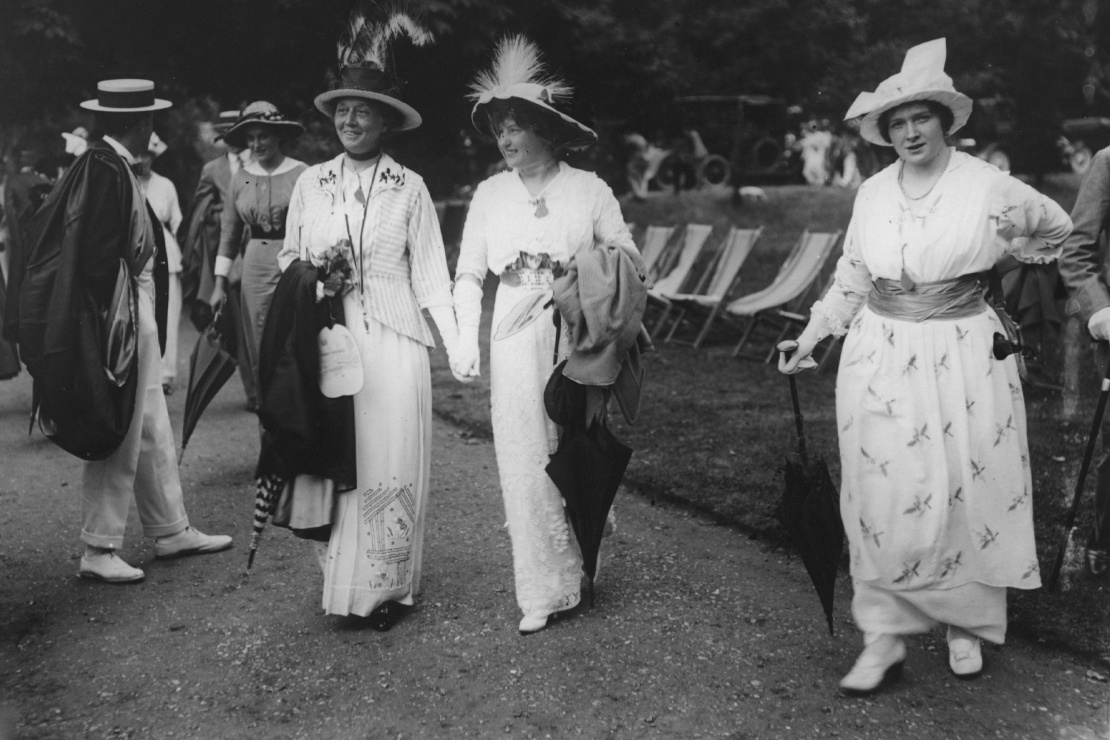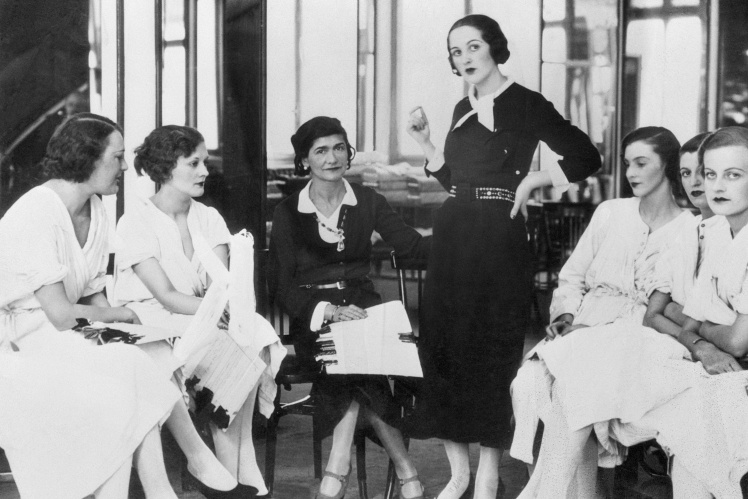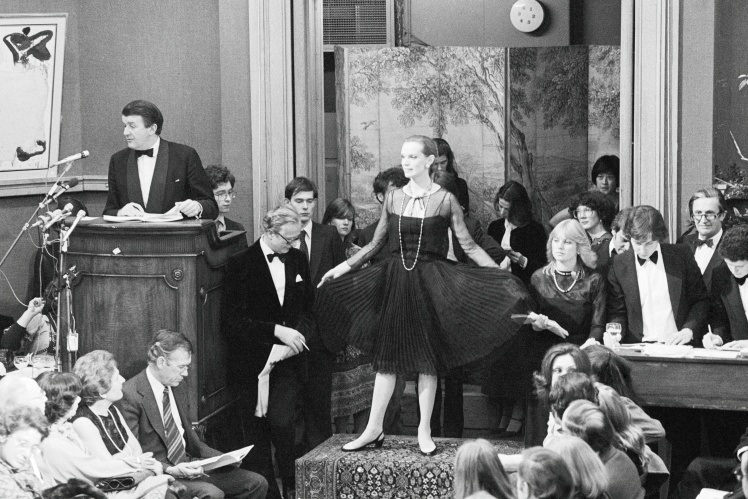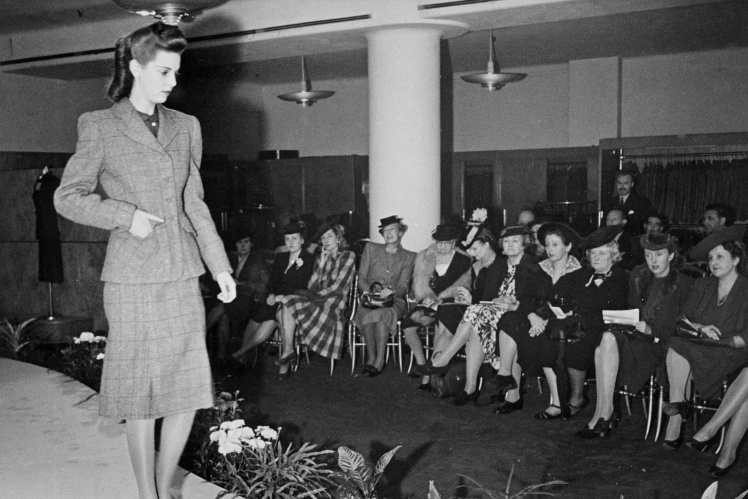Before the war, womenʼs clothing in Europe and America was an indicator of social status, age and gender. Wealthy women changed their dresses at least 4-5 times a day.
The First World War radically changed the role of woman in society, including her wardrobe. While men were at the front, women mastered their professions — they worked in construction, in factories and military plants, they were conductors and bus drivers, and even managers of some enterprises (yes, for those times this was strange).
Luxurious clothing with lace, embroidery and jewelry took a back seat. The entire textile industry now worked for war needs. Practicality and convenience became the main criteria for a womenʼs clothing.
Womenʼs fashion of Britain in the Edwardian era, that is, the period of the reign of King Edward VII from 1901 to 1910.
A shortage of fabric and new dress requirements led to the first revolutionary change in womenʼs fashion — skirts became shorter. The heavy skirt, which completely covered the legs, didnʼt suit the new realities at all. So in 1915 the hem of the skirt rose to mid-calf. Conservatives immediately called this debauchery, but no one listened to them anymore.
Women say goodbye to soldiers before the train departure, USA, 1918.
A popular womenʼs suit during the First World War consisted of a wide skirt that did not restrict movement and a jacket with patch pockets and a stand-up collar. Dresses made of practical fabric materials in black, gray, brown or blue colors also were in fashion. Such an outfit could be worn all day without the need to change clothes and the risk of getting noticeable stains. If earlier a woman could not change her clothes without someoneʼs help, now the fasteners in womenʼs clothes began to appear from the front side.
British women at the pavilion during a sea regatta near the Isle of Wight, 1923.
Short skirts were followed by pants. They were often part of a professional uniform. So, no matter how strange a woman wearing pants seemed at those time, they quickly became part of her everyday wardrobe.
Women in workwear in Maryland during World War I.
A woman in a sailor-style white linen trouser suit with wide legs and a matching jacket, 1920s.
The First World War freed women from the corset as well — and that was also "not out of goodwill" but because the metal from which solid corset ribs were usually made was used for the needs of the war. "American womenʼs refusal of rigid corsets during the war freed 28 000 tons of steel — enough to build two battleships," wrote one of the members of the American War Industry Commission in his report. The corset was replaced by a bra with straps without a back, which was patented by the American Mary Phelps in the fall of 1914.
During this period, female couturiers first appeared in the world of high fashion. The most striking examples are Coco Chanel, the author of the legendary little black dress, and Elsa Schiaparelli, one of the creators of the "pret-a-porte" concept. And the fashion shows (which started in 1911), in turn, were now organized to raise funds for war needs.
Coco Chanel (seated in the center) in her fashion salon in London, 1932. Coco Chanelʼs famous "little black dress" is sold at Christieʼs auction in London, 1978.
Getty Images / «Babel'»
Men were much less affected by the fashion revolution — they wore uniforms during the war. However, during the First World War, approaches to the design of military uniforms changed. Before that, different types of troops had uniforms of different colors — to distinguish their own from those of others during hand-to-hand combat, as well as for commanders to distinguish infantry, cavalry and artillery by color. The development of small arms and artillery has radically changed the tactics of warfare and the requirements for unity. Now the uniform had to be less bright, invisible to the enemy and more practical for life in the trenches. Therefore, during the First World War, uniforms that met these requirements were introduced in all combatant armies. First time, only the French with their blue jackets and red trousers stood out in terms of color. The British, in turn, switched to the "protective" khaki сolor at the beginning of the 20th century. Later, other armies began to follow their example.
New Year postcard of 1915. A British soldier (right) shakes hands with a French soldier (left), a German soldier lies below.
The practical military uniform became useful in civilian life as well. In the first postwar years in Europe, there was an acute shortage of clothing. Then civilians began to actively use stocks of military equipment. Remodeled uniforms were worn not only by men, but also by women, adjusted by size and often with changed design. This is how the prototype of the future military style was born — khaki color, rigid straight line of shoulders with linings, metal buttons.
Women practice with rifles at the San Francisco Naval Base during World War I.
Some elements of military clothing came to peaceful life without changing the design. For example, a trench coat model with a wide collar, an additional fabric insert in the upper back, shoulder straps, and a belt.
British soldiers in trench coats on the front line, 1914.
A British woman in a trench coat sends a letter, 1930s.
The Second World War continued the trend towards unification and practicality of clothing. If during the First World War restrictions on fabrics were introduced at the end of the war, during the Second World War the authorities began to limit them from the very beginning.
In Britain from 1941 to 1949 there were cards for buying clothes. In addition, the government has introduced strict norms for the tailoring of civilian clothes. Some of the strictest austerity rules applied to men clothing — single-breasted suits instead of double-breasted, no lapels on pants, limited number of pockets, shirts of adjustable length with no double cuffs. Even zippers were a subject to limitations. An exception was made for just two vital elements of civilian clothing — menʼs suspenders and womenʼs underwear.
A man tries on clothes of the new Utility design, 1942.
IWM
In 1942, the Utility brand civilian clothing went on sale in Britain. It was manufactured according to special government standards, which were developed taking into account the limited range of fabrics. It should have taken less time to produce such clothes, but quality control was maintained.
A woman inspects a collection of Utility-design suits in a London store, 1942.
For people in such universal clothes not to look like soldiers, well-known fashion designers were involved in the development of the design of the brand. They were given the task of creating cheap, but at the same time attractive, stylish and diverse clothes. And they did a good job on this. Dresses, coats, jackets, trousers, shirts with simple lines and minimal decoration, designed by the Utility, quickly became popular outside of Britain.
A model on the catwalk at the West End Utility Fashion show in London during the Second World War, September 1942. British fashion designer Norman Gartnell, one of the creators of Utility design, examines a model in a new dress, 1942.
Getty Images / «Babel'»
Real design know-how also appeared under the conditions of total economy. For example, in Britain, so-called "siren suits" were invented — stylish overalls that could be quickly put on to get to a bomb shelter during an air raid alert. The womenʼs models of this clothing had a special section at the back that could be unbuttoned to go to the toilet without removing the whole overalls. In the USA, in turn, restrictions on fabrics led to birth of a separate womenʼs bathing suit — bikini.
British nurses in "siren suits" and protective headgear during an air raid drill, February 1940.
Girls in bikinis on Brighton beach, 1952.
The civilian population also showed creativity. Old menʼs suits and shirts, pillowcases and blankets were remade into womenʼs blouses and suits, childrenʼs dresses and coats, wedding dresses were made from curtains.
Stockings were the scarcest commodity then. Especially thin ones, made of silk and nylon, which appeared shortly after the start of the war in 1939. The manner of wearing summer shoes "barefoot" spread during the Second World War. Here, pants, which were already not only work clothes, but also casual clothes, became useful as they hid the legs. Though some creative women imitated stockings with the help of an eyebrow pencil, which was used to draw a "seam" on the back of the leg.
A woman demonstrates how to imitate a stocking seam on her leg with an eyebrow pencil, London, 1940.
As for military uniforms, the trend for convenience and practicality continued here. More pockets appeared in the uniform, which allowed soldiers to carry more equipment. Some experts still insist that the Nazi uniform was the best in terms of design and practicality. It was sewn at the factory of Hugo Ferdinand Boss, the founder of Hugo Boss fashion brand.
The SS head Heinrich Himmler (in the first row, third from the right) together with officers in black uniforms made at the Hugo Boss factory, 1932.
During the Second World War, military uniforms were finally made for women in various armies. A blue military uniform was developed for the British Womenʼs Royal Naval Service and Womenʼs Auxiliary Air Force. Military personnel of the U.S. Womenʼs Auxiliary Army Corps wore a beige summer uniform with maroon trim, which was made to emphasize a special lipstick color. And the winter uniform was olive-gray and yellowish-brown in color. In Germany, womenʼs staff uniforms were gray, military uniforms were brown. In the Soviet Union, women who served in the army wore the same “protective” color uniform as men.
US military Womenʼs Auxiliary Army Corps unveil new uniform, 1942.
Getty Images / «Babel'»
Elements of military clothing also became popular among civilians. For example, a leather bomber flight jacket with an insulated collar, designed for pilots, so that it is more convenient to cope with weather conditions. There is also the American military jacket model M41, developed during the Second World War.
The crew of a B-24 Liberator heavy bomber arrives at a US Air Force base, December 1942.
During the World Wars, not only womenʼs skirts became shorter, but also their hairstyles. Turbans and headscarfs came into fashion, instead of not too comfortable hats. Under them [turbans and headscarfs], it was possible to hide unwashed hair or the lack of a hairstyle without any problems.
Workers at the Royal Munitions Works, England, November 1943.
Getty Images / «Babel'»
During the Second World War, a special design of womenʼs handbags, with a separate pocket for a gas mask, appeared in Britain. The lights were often turned off there due to the threat of airstrikes, then various accessories that reflected light or glowed in the dark became fashionable.
Womenʼs handbag with a compartment for a gas mask from the Second World War.
IWM
In addition to the flight jacket, special sunglasses for pilots also have become fashionable. They were developed in 1936 by the American company Bausch & Lomb, which specialized in various optics, including military ones. Glasses made of light metal had a special shape that covered the eyes from the sunʼs rays as much as possible. Aviator glasses became so popular that the company specifically registered the Ray-Ban trademark for them. Now it is one of the most popular models of glasses in the world.
American pilot in aviator glasses, 1942.
Standard accessories were not encouraged in society during the wars and were considered frivolous. Instead, even during the First World War, creative rings and bracelets made from fragments of shells or ammunition came into fashion. During the Second World War, the assortment only expanded. For example, a plastic bracelet made of the windshield of a downed German plane was introduced.
WWII plastic snake bracelet made from the windshield of a downed German plane.
IWM
Translated from Ukrainian by Ruslana Stolz.
The current fashion trend is to support independent Ukrainian media. Help Babel: Patreon 🔸 [email protected]🔸donate in cryptocurrency🔸in hryvnia.
Read more:
- For more than a century, coffee has been the main drink for soldiers. Donʼt believe this? Here is the history of coffee from the trenches of the world wars to the modern frontline in Ukraine — in archival photos
- Alcohol helped in the war if it was consumed in moderation. This relates to beer, wine, rum, vodka, and, of course, cocktails on the frontlines and in the rear of the Second World War — story in archival photos






